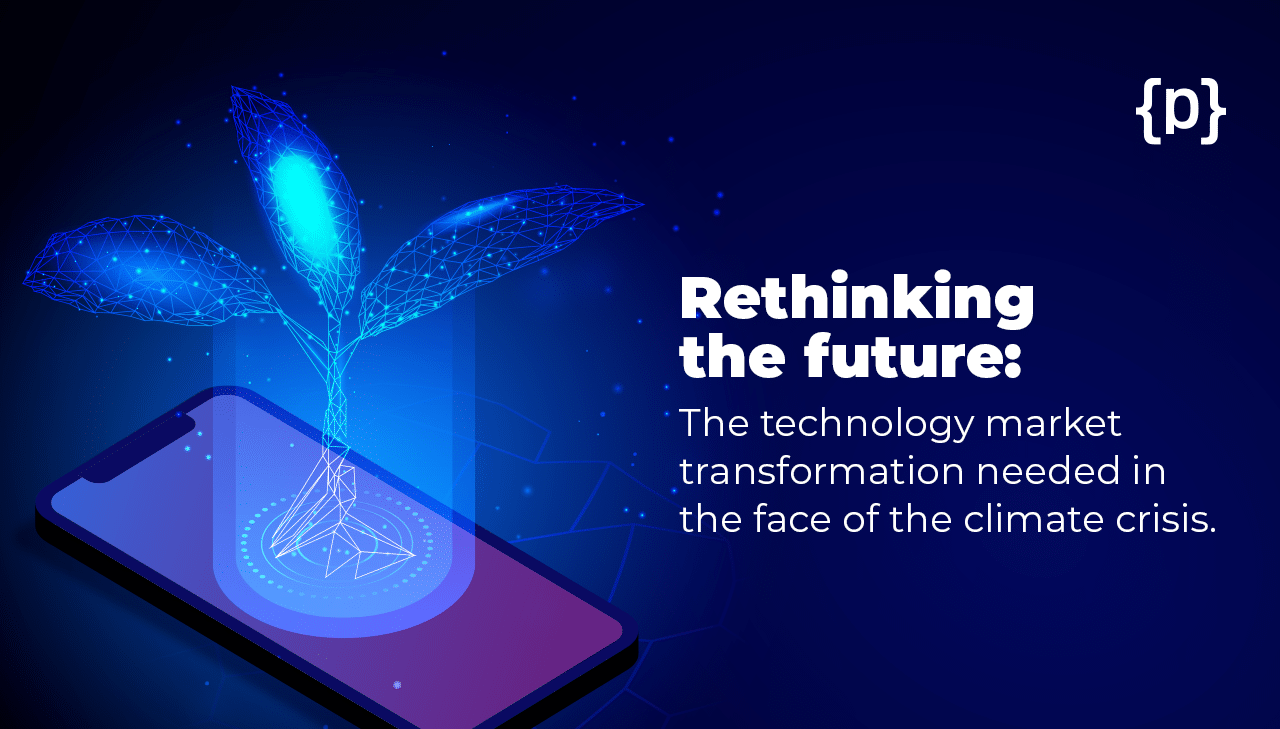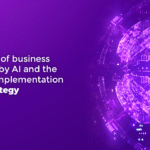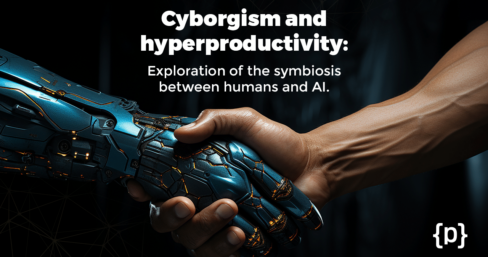What does the climate crisis have to do with the technology market? That may be the question on your mind. At first glance, these two themes may seem unrelated, but the reality is that in a game of cause and effect, they are inextricably linked and have significant implications for our future.
The climate crisis
Today is one of the biggest challenges facing humanity. Rising greenhouse gas emissions, depletion of natural resources, and environmental degradation threaten our planet and the well-being of future generations. Given this scenario, there is a need to adopt sustainable approaches in all areas of life, including software development.
While the technology sector is one of the main drivers of innovation and progress, it also has implications for the climate crisis. As the demand for electronic devices, online services, and data infrastructure increases, it is essential to examine the environmental impact of this industry, starting with two key points:
- Greenhouse gas emissions:
A significant portion of global greenhouse gas emissions comes from the technology sector. According to the International Energy Agency (IEA), the technology sector is responsible for about 3.7 percent of global emissions. This amount includes the manufacture, operation, and disposal of electronic equipment and is comparable to the emissions of the entire airline industry.
- Energy consumption:
The growing demand for online services, data centers, and electronic devices consumes massive energy. According to the same report (IEA), global electricity consumption by the technology sector could double by 2030. With the advancement of technologies such as artificial intelligence, energy demand is likely to increase even further. That is concerning because most energy comes from non-renewable sources such as coal and gas.
The growing importance of artificial intelligence holds the promise of revolutionizing humanity, but it is necessary to keep in mind the consequences.
Artificial intelligence has been in the spotlight this year, showing tremendous potential to change the world and improve various aspects of our lives. However, it is essential to consider what environmental impact these technologies may have as they become more present in other areas, such as transportation, industry, healthcare, and agriculture.
Interacting with ChatGPT, the artificial intelligence developed by OpenAI, one can learn that training large-scale artificial intelligence models can require significant energy consumption, especially when it involves compute-intensive resources such as servers and data centers. Various energy sources can power these resources. Some of these sources can produce greenhouse gas emissions.
Training artificial intelligence models can vary in terms of the resources used. These factors directly influence the energy consumption and carbon emissions associated with training, but we already have some data:
- Power Consumption
AI is computationally intensive and requires large amounts of power to operate. Machine learning algorithms and AI models trained in data centers consume significant amounts of electricity. According to a study published in Nature Magazine, training just one AI model can emit as much carbon dioxide (CO2) over its lifetime as five cars.
- Data and Storage Infrastructure
IAs rely on large amounts of data for training and operations. Such data may only store in servers and data centers, which consume energy to run around the clock. In addition, the increased use of cloud services to host AI models contributes to higher energy consumption and greenhouse gas emissions.
- Potential for sustainable solutions
Despite the challenges, AI can also be part of the solution to the climate crisis, being used to optimize energy use, improve the efficiency of buildings and power grids, develop more accurate climate models, and facilitate the transition to renewable energy sources.
Energy consumption, data infrastructure, impact on mobility, and transportation are some issues to consider. Although, it is necessary to emphasize that AI also has the potential to drive sustainable solutions.
Through continued research and development, it is possible to balance the impacts of AI adoption and environmental mitigation, working toward a more sustainable and resilient future.
Have you ever heard of GreenCoding?
GreenCoding refers to environmentally conscious and sustainable software development practices. The term GreenCoding is an extension of the broader concept of sustainable software development, which aims to reduce the environmental impact of the technology industry.
GreenCoding includes various approaches and techniques to minimize energy consumption, optimize application performance, and reduce the carbon footprint associated with software development. Some GreenCoding practices include:
- Energy Efficiency: Developers strive to write code that consumes less energy during the implementation, reducing the burden on systems and infrastructure.
- Resource Optimization: System resources such as memory and processing efficiently, eliminating waste and promoting better use of available resources.
- Minimize emissions: Choose less polluting programming languages and use free code tools such as Cloud Carbon Footprint to estimate carbon emissions.
- Sustainable design: When designing applications, developers consider efficient use of resources, ease of maintenance, and software longevity to reduce the need for upgrades and premature retirement.
Green coding is a strategy to reduce the technology industry’s environmental footprint and promote more responsible software development. By adopting these practices, companies can help reduce the use of physical resources and energy by using energy intelligently.
Resource waste is also a villain in the technology industry
According to the CHAOS Report conducted by the Standish Group, 64% of typically produced functionality is not in use. The result is that a significant portion of the resources, effort, and energy invested in software development is in vain.
There are several reasons for this. In many cases, features are designed based on assumed user needs but are not validated. The result can be feature implementations that have not provided real added value or do not meet real user needs. In addition, the often fast-paced software development cycle itself can lead to hasty decisions about which features to prioritize, resulting in an overabundance of features that are not in use effectively. As a result, energy demand increases, and the technology industry has a larger carbon footprint.
Performa_IT reflects our commitment to efficiency and resource optimization with an explicit policy: “It is not enough to be possible. It must be necessary”. This approach emphasizes the importance of avoiding the development of unnecessary functionalities and focusing on those that add value to users.
Through lean thinking, we aim to validate the right product before building the right product. Encourage a mindset driven by the real needs of users and avoid wasting resources, time, and energy in developing solutions. By emphasizing the importance of careful and continuous analysis of user needs, we ensure that every feature we implement is needed and delivers tangible value.
Conclusion:
While bringing many benefits, technology impacts the climate crisis.
Businesses and consumers must adopt more sustainable practices such as energy efficiency, increased recycling, and reduced overconsumption and waste.
It is important to remember that the physical absence of the computer tower under the desk does not mean it no longer exists in an age of ever-increasing cloud storage and process. To be sustainable means to be aware that even if you have access to an abundant resource, it is necessary to apply lean thinking focusing on it has to be necessary.
With this perspective, we will use our resources more consciously, aiming for abundance and access for all inhabitants of our blue planet. In this way, technology can establish itself as a driver of a more sustainable world.
This approach aligns technology with the construction of a more balanced society. It establishes technology as a powerful ally in the search for solutions to the climate crisis and the indispensable preservation of our planet and its resources.








